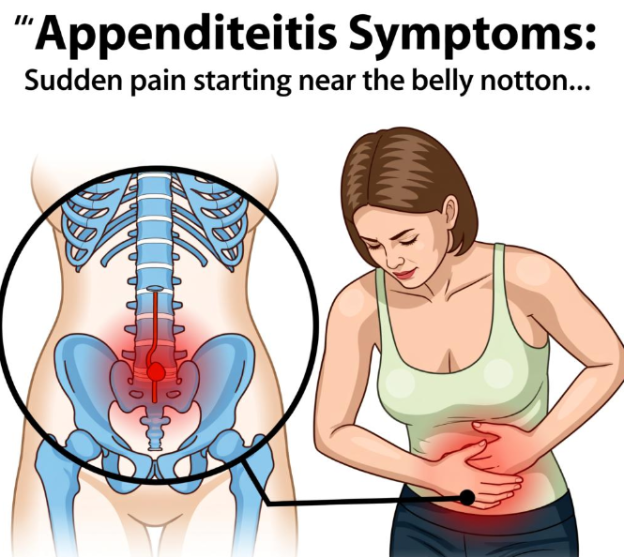Acute appendicitis results from luminal obstruction followed by bacterial overgrowth and rapid inflammation. Cardinal features in chronological order are:
- Migratory pain
Vague periumbilical or upper-abdominal discomfort migrates to the right lower quadrant within 4–6 h and intensifies with movement, coughing or palpation. - Gastro-intestinal upset
Anorexia, nausea and often vomiting; loose stools or constipation may mislead toward gastroenteritis. - Fever
Low-grade 37–38 °C early, rising >38.5 °C as inflammation advances; elderly or immunocompromised patients may remain afebrile. - Peritoneal signs
Maximal tenderness at McBurney point, rebound pain, guarding and hypo-active bowel sounds indicate parietal peritoneal irritation. - Systemic toxicity
Tachycardia, malaise, thirst; high fever with pallor or hypotension suggests gangrene or perforation with sepsis. - Special populations
Pregnancy displaces the appendix upward, shifting pain to the right upper quadrant; infants present with irritability, refusal to feed and high fever.
Perforation risk rises sharply after 48 h; any sustained abdominal pain with fixed right-lower-quadrant tenderness warrants urgent evaluation.
| Feature | Typical Findings |
|---|---|
| Pain onset | Periumbilical → right lower quadrant |
| Quality | Dull early, later sharp, worsened by cough |
| GI symptoms | Anorexia, nausea, vomiting, ± diarrhea |
| Fever | Low → moderate, may exceed 38.5 °C |
| Peritoneal signs | Tenderness, rebound, guarding at McBurney |
| Alarm signs | High fever, hypotension, diffuse pain (perforation) |
| Imaging | US/CT: enlarged appendix >6 mm |

